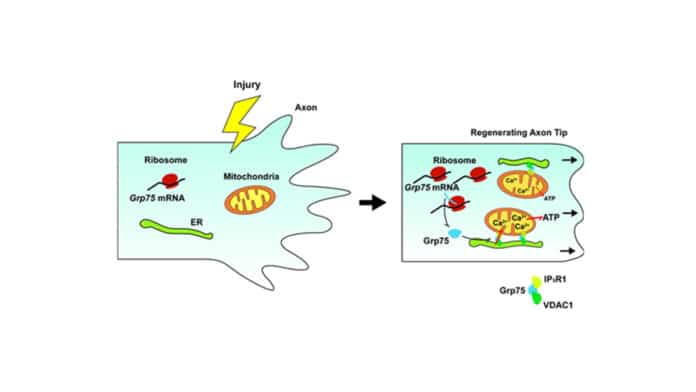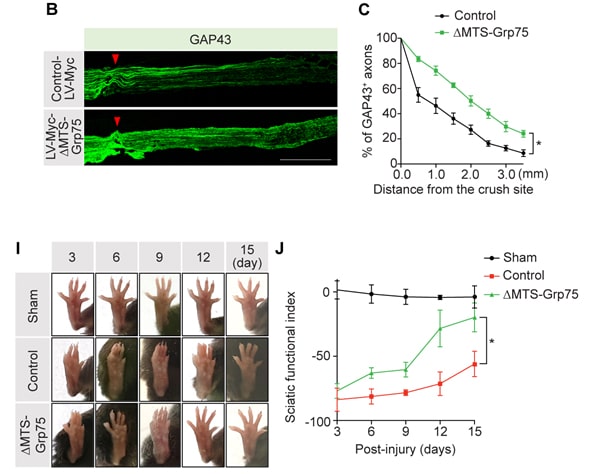A damaged nerve cell heals once in a while. Grp75 (Glucose regulated protein 75) is the protein that is responsible for cell regeneration. It is expected to show another heading in the advancement of therapeutic agents for recovering damaged brain or spinal cord nerves.
An examination group, driven by Professor Kyung-Tai Min in the School of Life Sciences at UNIST has recognized the principle that the protein ‘Grp75 (Glucose controlled protein 75)’, a protein connecting organelles in cells, recovers damaged nerves. Moreover, Grp75 protein was infused into the nerve-impaired mice to affirm that activity limit and sensory capacity were restored.
The molecular and cellular mechanisms of neuronal regeneration have not been well understood until now. Moreover, a study on this process to restore the ability to regenerate neurons was also less than research suggesting.
In this new study, scientists took a gander at the regeneration process after neuronal damage and found an essential protein.
When neurons are damaged, a few cells’ responses to the regeneration. In the first place, the endoplasmic reticulum and mitochondria move as far as possible of the axon. The endoplasmic reticulum is responsible for repairing the torn membranes and the mitochondria accountable for providing the energy expected to the cell response. Be that as it may, as of now, the supply of vitality isn’t adequate than the demand for energy, and the regeneration of the nerve cells isn’t performed easily.
The group focused on Grp75, a protein that links the endoplasmic reticulum and mitochondria. The increase in this protein predicts that the cooperation between the endoplasmic reticulum and mitochondria increases and assists with cell regeneration. Indeed, the analysts have demonstrated this through experimental mice. The nerve cells that go through the thighs, the ‘sciatic nerve,’ induce the overexpression of the Grp75 protein in damaged mice, affirming nerve cell regeneration.
Soyeon Lee, in the Combined M.S/Ph.D. of Life Sciences at UNIST, said, “Overexpression of Grp75 increases ER–mitochondria contacts. This has provided the energy need to regrow injured axons.”
“Through this study, we have found that an increased level of Grp75 in DRG neurons promotes axon regeneration and functional recovery of animals with nerve injury. Our results raise the exciting possibility that overexpression of cytoplasmic Grp75 may be a therapeutic strategy to treat and enhance axonal regeneration, following nerve injury.”
This study has been supported by the National Research Foundation of Korea (NRF) and funded by Samsung Research Funding & Incubation Center for Future Technology. Their results have been published in the internationally-renowned scientific journal, PNAS on July 23, 2019.

